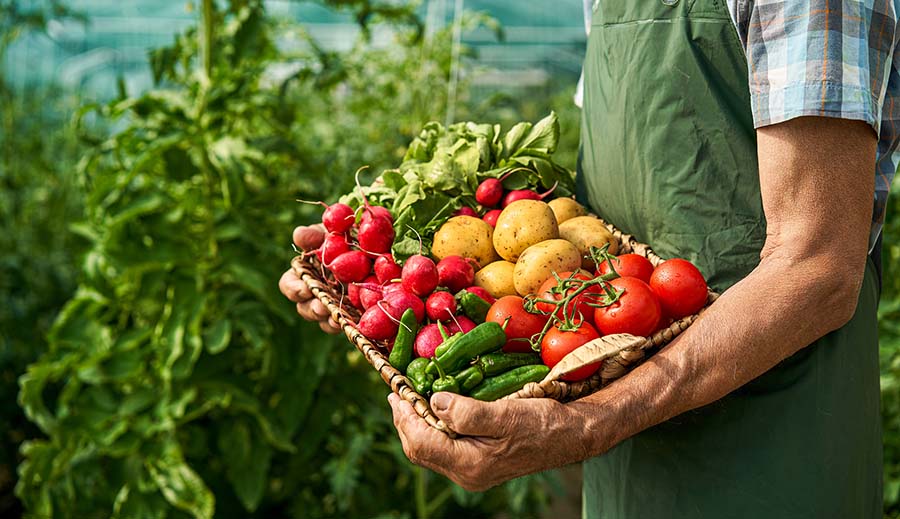We've covered the science, the systems, and the structures. We've wrestled with the numbers and the long-term payback. Now, let's put it all together and see what a successful geothermal greenhouse project looks like in the real world.
This final chapter is a case study of a fictional community-supported agriculture (CSA) project called "Northfield Growers." This story is a composite, blending the real-world experiences of hobbyists, small commercial growers, and community organizers. It’s a step-by-step look at how a passionate group took the dream of year-round local food and turned it into a warm, thriving reality, even in the depths of a cold northern winter.
The Goal: A Four-Season Solution to Food Insecurity
The Northfield Growers project wasn't born from a strategic plan; it was a direct response to the tyranny of the calendar. In their small, northern town, the window for fresh, local produce was a fleeting three-month luxury. For the other nine months, they were at the mercy of expensive, trucked-in food, and the shelves of the local food pantry reflected that hard reality.
A group of dedicated master gardeners and community advocates decided to tackle the problem head-on. Their goal was ambitious: to build a year-round, 3,000-square-foot greenhouse that could provide a consistent supply of fresh greens and vegetables for the food pantry and a "pay-what-you-can" farm stand for the local community. They knew a conventional, fossil-fuel-heated greenhouse would be a financial and environmental dead end. They needed a sustainable, long-term solution. They needed to go geothermal.
The Plan: A DIY-Assisted Approach
With a clear goal, the Northfield Growers team started on the practical planning. They knew their community-funded budget couldn't support a fully-contracted, turnkey installation. Instead, they opted for a DIY-assisted approach, leveraging the skills of their members to tackle the parts of the project they could handle themselves.
Their first and most important decision was to use a shallow geothermal (geo-exchange) system. While their region had no deep geothermal resources, the stable, 50-degree temperature of the ground was a universal asset they could tap into anywhere.
After researching their options, they decided on a horizontal, closed-loop system. Several of their members were experienced with excavation and heavy equipment, making it a much more affordable option than drilling deep vertical wells. They mapped out a large, open field next to their planned greenhouse site, and after consulting with a professional geo-exchange designer to get a properly sized plan, they were ready to break ground.
The Build: A Community Effort
With a solid plan and some generous grants, the Northfield Growers team got to work. It was an ambitious undertaking accomplished through genuine community effort.
The group members with excavation experience spent a long weekend clearing and then digging a series of six-foot-deep trenches for the horizontal loop field. Teams of volunteers helped unroll and lay thousands of feet of pipe, while a local contractor donated their time to connect the loops and pressure-test the system.
For the structure, they chose a practical, 3,000-square-foot rectangular hoop house design, which was perfect for maximizing their growing space. They poured an insulated foundation and built a solid, heavily insulated north wall to serve as the greenhouse’s backbone, protecting it from the winter wind and providing a thermal battery. The final step was to stretch a high-performance, clear reinforced polyethylene (RPE) covering over the frame. The team chose clear RPE as the perfect balance for their needs. While it wasn’t the option with the highest R-value, it provided the high light transmission they wanted for the dark winter months, DIY-friendly installation and repair to accommodate their budget, and a massive durability upgrade over single films.
The Result: A Thriving Year-Round Harvest
Today, the Northfield Growers greenhouse produces fresh food year-round for the townsfolk, including the local food pantry and the “pay-what-you-can” farm stand. Even when the snow is piled high outside, the interior is warm and green, with rows of fresh lettuce, spinach, kale, and other healthy foods that had been largely unavailable for nine months of the year.
The project proves that with careful design, a dedicated community, and the stable, renewable energy of the earth, it’s possible to build a secure, local, and environmentally sustainable food system, even in challenging climates.
Looking Forward: The Future is Under Your Feet
This guide is based on a simple premise: that the dream of year-round, sustainable local growing isn’t just a pipe dream. We’ve covered a lot of material, from the foundational science to real-world economics, and now you have the core knowledge to turn your own dream into a practical plan.
The path to a geothermal greenhouse is a significant undertaking. Still, the rewards—in energy savings, food security, and environmental sustainability—are equally substantial. The technology is proven, the principles are sound, and most importantly, the critical resource is right under your feet. It’s time to start digging.




